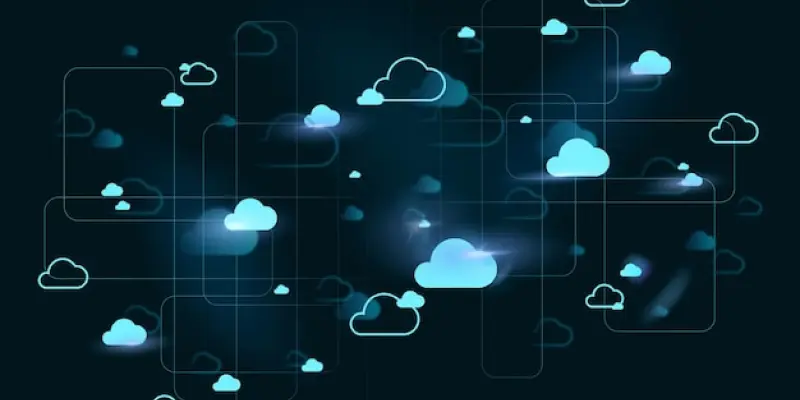In an increasingly interconnected digital world, reliance on cloud infrastructure has become inevitable for individuals and businesses alike. However, recent outages from tech giants Cloudflare and Google have exposed vulnerabilities within cloud services, stirring discussions about technological resilience and risk mitigation. The simultaneous occurrences of these disruptions affected millions of users globally, highlighting the fragility of our current digital frameworks. These incidents not only demonstrated dependencies between various cloud components but also stressed the need for improved strategies to prevent future mishaps. As cloud infrastructure becomes more essential in daily operations, understanding these failures and finding solutions become crucial tasks for technology providers and users.
Analysis of Cloudflare’s Reaction and Impact
Technical Overview and Immediate Response
Cloudflare’s outage commenced at 18:19 UTC, affecting multiple services like WARP connectivity, Workers KV, Browser Isolation, and Stream. The chaos resulted from a failure in the Workers KV service, with a third-party dependency issue playing a central role. This disruption illustrated how interconnected these services are, with one failure leading to widespread trouble across critical features. Cloudflare’s team had to act swiftly to diagnose and address the root causes, showcasing the unpredictable nature of cloud systems. By persistently engaging in recovery operations, Cloudflare gradually restored its services by 21:31 UTC. These challenges offered a glimpse into the complexities of cloud recovery processes, simultaneously reinforcing the importance of having contingency plans and robust cloud management systems in place.
Additional Insights and Lessons Learned
The outages at Cloudflare revealed critical insights into the challenges faced by companies in maintaining seamless cloud operations. The dependency issue highlighted gaps in the technology ecosystem, underscoring the need for constant monitoring and responsive strategies. Besides addressing technical failures, companies may need to rethink their dependency on third-party components to avoid similar disruptions in the future. Furthermore, transparency in outage reports can foster trust between providers and users, demonstrating a commitment to improvement and accountability. As Cloudflare plans to provide an exhaustive review of the incident, acknowledging underlying vulnerabilities will be vital to making innovative strides in strengthening cloud infrastructure resilience.
Evaluating Google’s Outage and Response Strategies
Scope and Immediate Resolution Efforts
Google’s outage unfolded swiftly at 17:58 UTC, impacting primary Workspace applications: Gmail, Google Calendar, Google Drive, and AppSheet. Known for its vast service spectrum, Google’s engineers faced immense pressure to ameliorate the situation urgently, initiating corrective measures amidst global user discontent. Although most services were restored progressively by 19:48 PDT, realizing complete resolution only by 23:00 PDT highlighted both the scope and severity of the outage. These events illuminate utility circular dependencies within Google’s cloud framework, stressing the value of meticulous planning and prompt response capabilities to safeguard against similar incidents in the future.
Broader Implications for Digital Infrastructure
Analysis of Google’s outage extends beyond the immediate incident, prompting considerations about the essentiality of safeguarding cloud ecosystems. Such failures can lead to cascading effects, impacting a myriad of services that users rely on for everyday operations. The incident serves as a reminder for digital infrastructure providers to revisit their architecture and implement strategies that emphasize resilience and reliability. Google’s forthcoming detailed report will likely unravel systemic issues, spotlighting areas for improvement in anticipating and mitigating risks. As cloud usage rises steadily, drawing actionable insights from these occurrences will be vital for advancing more robust cloud technologies that can withstand unforeseen challenges.
Future Directions for Cloud Services
The recent Cloudflare outages have shed light on significant challenges that companies face in maintaining seamless cloud operations. These outages highlighted a critical dependency issue, revealing gaps within the broader technology ecosystem, and underscoring the importance of relentless monitoring paired with responsive strategies. In addition to addressing technical glitches and failures, enterprises may need to reassess their reliance on third-party components to stave off similar disruptions in the future. Also, promoting transparency in outage reports can help build trust between service providers and users, showcasing a strong commitment to improvement and accountability. As Cloudflare prepares to release a comprehensive review of the incident, identifying and acknowledging root vulnerabilities will be crucial for advancing innovations aimed at bolstering cloud infrastructure resilience. This proactive approach will play a pivotal role in enhancing both operational dependability and the trustworthiness of cloud technologies in an ever-evolving digital landscape.

